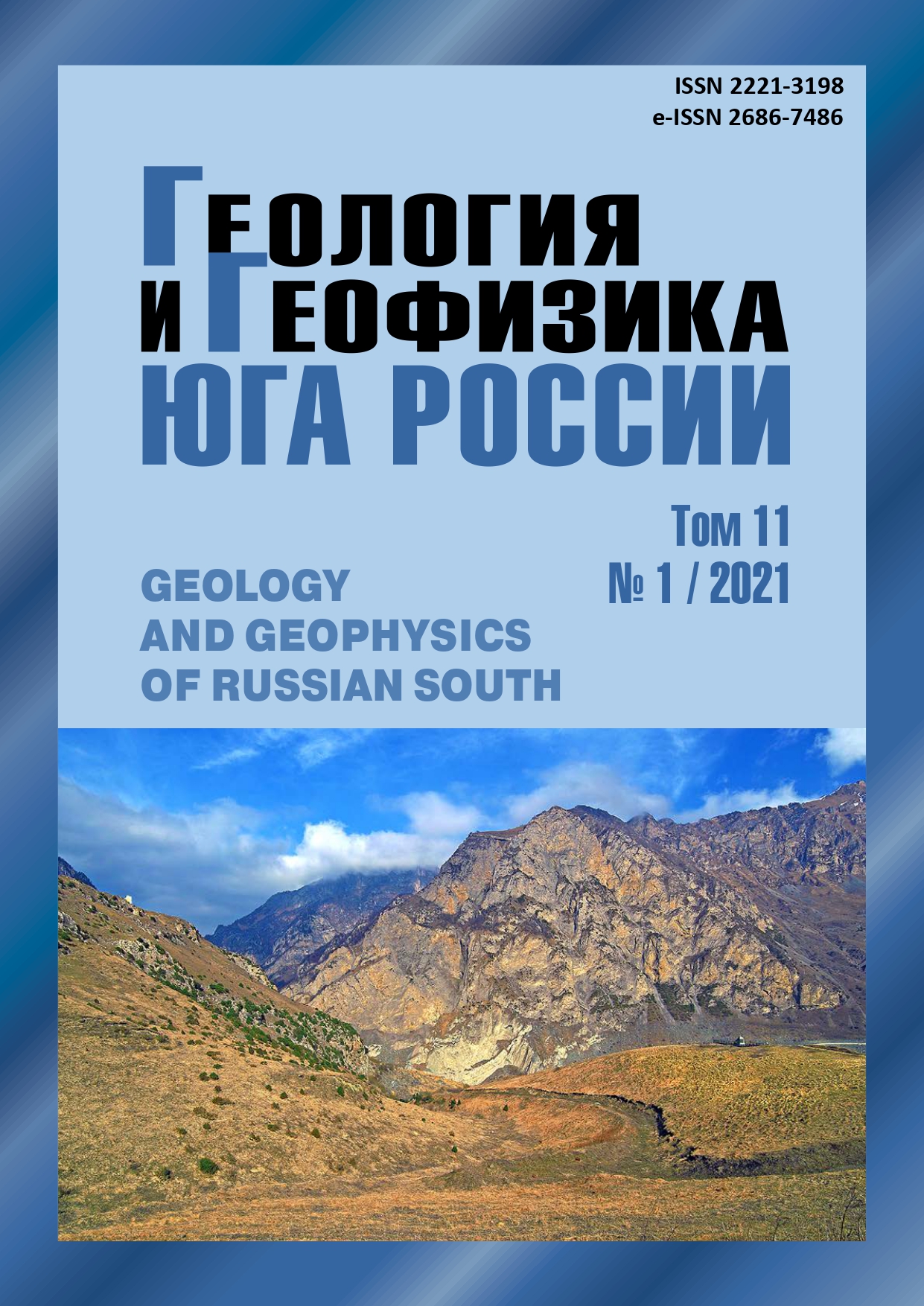Mineral composition of serpentinites of the Kishinskij protrusion (Greater Caucasus)
Abstract
Relevance. Several key issues in the geology of the serpentinite massifs of the Greater Caucasus remain debatable. These include formational and geodynamic typing the protolith of apohyperbasites. The necessary factual material for discussing these issues is information about the mineral composition. The object of research is the serpentinites of the Kishinsky massif, which lies at the base of the Kizilkol tectonic cover in the zone of the Peredovoy Range of the Greater Caucasus. The aim of this study was to gather data on serpentinites of Kishinsky massif mineral composition; characteristics analysis of the zonal composition of chromespinelides; to obtain data on the formation conditions and transformation of apohyperbasites. Methods. X-ray phase analysis, electron microprobe analysis and electron microscopy, statistical analysis of measured results. Results. The studied serpentinites are intensively dislocated. Generally, they are of chrysotile-antigorite composition. As part of the “tectonic pellets”, the inner parts are composed of antigorite (with a small amount of chrysotile) and brucite varieties, the outer parts are chrysotile – antigorite with clinochlore. Presence of hydrothermal talcose, silicification and carbonatization is noted in the observed faults. There are zonal chromespinelides in serpentinites where nuclear part is represented by chromohercynite with relics of chromepicotite; the edges – ferrochromium and chromemagnetite; locally observed thin rims of magnetite. Metasomatic substitutions in chromespinelides were accompanied by the addition of Fe (which replaced both di-and trivalent cations), Mn, Ni, and the removal of Mg, Al, Cr, and V. Rock transformations occurred in the high-temperature zone of the greenschist facies with reducing fluids at a relatively low fluid/rock ratio. The values of Cr# are ~0.5‑0.7, Mg# ~0.4‑0.6 for the cores which corresponds to the primary magmatic spinels composition area. Based on the composition of chromespinelides it is established the apohyperbasites are associated with the ophiolite’s association and close to ultramafic rocks of island-arc environments, including serpentinite diapires in the front parts of island arcs. A formational similarity is established – belonging to ophiolites, but there is a difference – in the P-T parameters of the conditions of metamorphic transformations when compared with serpentinites located to the north of the Dakhovsky shield.


